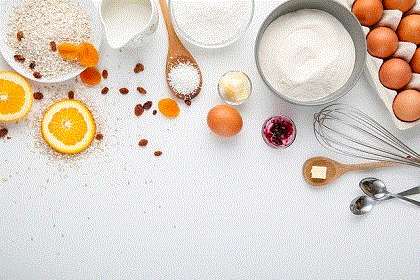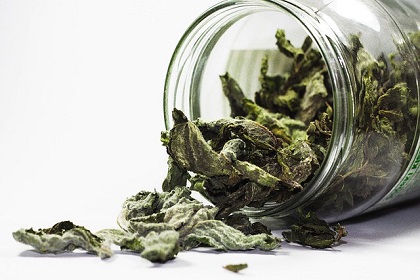Smoking is one of mankind’s many bizarre rituals. It is universally practiced in both primitive and advanced societies. Who can tell if this is ‘natural’ or not… Perhaps, for at least some of our species, smoking is as much a genetic compulsion as, say, spinning is for spiders. However, many of us feel that it is not in our lungs’ best interests to inhale large amounts of heat, tar, and smoke along with other substances. Thus, the logical alternative to inhaling substances would be to eat them. However, comfort often influences our choices. It’s easier to light a cigarette than to slave over a hot stove and then have to wait for the fruits of our labour to take effect. What’s more, many of us are so accustomed to smoking, that we are unlikely to change our habits. So, why would a cannabis smoker think of switching to eating it instead?

If cannabis is consumed, then around one and a half hours will normally pass until the first stage of the “high” is fully felt. The euphoric state then continues to increase. This can go on for four to eight hours, in some cases even longer. This long-lasting “high” can also be very valuable to anyone who is in a place where they can’t comfortably smoke, or where doing so would be difficult to conceal. Whilst it can take up to 90 minutes for cannabis to start working, many recipes are designed to work faster. Some can give noticeable results in as little as fifteen minutes.
For cannabis, the rate of absorption from food as it travels through the body is roughly as follows: 1/3 is absorbed in the first 3-4 hours up until the initial “high”; 1/3 is gradually absorbed over the following 6-8 hours and maintains the high; 1/3 of the unabsorbed material will end up being excreted unabsorbed from the system. The best recipes ensure the optimal amount of absorption with the least amount of wastage, following the principle that a little of the right food helps with the absorption of the cannabis resin, whereas too much food merely dilutes its potency and wastes much of it. For this reason, cannabis is best combined with small bites rather than hearty foods, and these bites should not be consumed on a full stomach.
It should also be noted, that the active resins of cannabis become more soluble (even slightly soluble in water) in an alkaline environment, with acidic conditions interfering with its solubility. The resin appears to be best absorbed under the influence of alkaline fluids in the upper small intestine, and absorption in the lower intestines is really quite minimal.
An often-asked question is, “What is the effect of the heat from cooking on cannabis? Does it destroy its potency?”

Under normal conditions, the potency does not deteriorate noticeably as a result of cooking. For the most part, any temperature that would actually burn or destroy the active element would also spoil the recipe itself just as quickly.
The loss of potency of THC is usually the result of oxidation. Unless cannabis is kept in an airtight environment, it will oxidize. In a freezer, the degree of oxidation is almost zero. At room temperature, oxidation is gradual. Ten percent can be lost over a period of several months. At higher temperatures, in the tropics, for example, this decrease is only slightly higher. If cannabis is kept in a very hot place, say at 65C or higher, a much more substantial drop in potency can be expected in the same amount of time.
Here is a recipe that is a great start if you are interested in cooking with cannabis.
The process for making butter and oil is the same, but using the whole buds (flowers) is preferable, rather than the leaves or stem, because the better and stronger the cannabis is, the better the end product will be. It is best to make a strong extract and dilute it with plain butter or oil, to taste, when cooking. It can also be made with leaves, but it will be weaker and darker in colour.
Cannabis can be extracted into any natural oil, and coconut oil is most often recommended these days, because of its health-giving effects. It’s also high in fat, which means it binds a lot more effectively to cannabinoids.
Most recipes recommend that a serving of food contain 2-3 teaspoons of cannabis butter or oil.
28 – 29g of dried cannabis flowers
0.5 litres of butter or two cups of coconut oil
You will also need:
A wooden stirring implement
A large pot or saucepan
A large transparent bowl or container
Gauze / fabric / Muslin / T- shirt
String, tape or rubber bands
Step 1
Place the cannabis in a food processor or mixer. A coffee grinder also works well, the finer the powder, the better.
Step 2
Place a large pan on the stove and add enough water to make around 10-12 cm deep. The most important thing is to ensure that the cannabis is always a good 3-5 inches from the bottom of the pan.
Step 3
When the water is fully boiled, add the butter and allow it to melt completely.
Step 4
Once the butter has melted, turn the temperature right down and add the cannabis. The mixture should be cooked very slowly and at a low temperature. Be prepared to keep it on the stove for about 3 hours and not let it boil! Stir every fifteen minutes at least.
Step 5
At first, the mixture will be clear, and the cannabis will not yet have been extracted. Over time, the colour of the butter will begin to change and the mixture will become dense and dark in colour. This is a striking difference that is almost impossible not to notice.
Step 6
Prepare the bowl for the finished product. Place a double layer of the cheesecloth or muslin/fabric on top of the bowl. Secure it in place with tape, string, or a thick rubber band. (Remember to leave the fabric a little loose so nothing will spill when it comes to pouring in the mixture.)
Step 7
When the mixture is thick and shiny in appearance, pour it over the pot carefully so as to avoid spillage. Once it’s all been poured in, carefully loosen the string or rubber band, pick up the fabric and squeeze out any remaining butter. Remember, everything will be hot, so be careful. This part of the process can be a little time consuming, but it’s worth it!
Step 8
Allow the can of butter to cool for an hour or two before placing it in the fridge. Once in the refrigerator, keep it there until the butter and water are fully separated. The butter will accumulate at the top and solidify.
Step 9
With a knife, go around the edge of the bowl and lift out the butter.
Step 10
Place it upside down on a cutting board and scrape off any remaining liquid on the top. The butter is now ready and can be used for anything